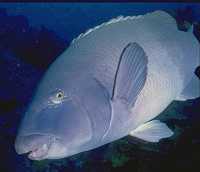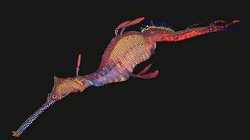Parks VICTORIA
Discover Hidden Treasures - Victoria's Unique and Diverse Marine Life |
 |
| |
Caring for Victoria's Marine National Parks and Marine Sanctuaries
| |
|
|
Weedy Seadragons are also a good representative of the fragile nature of our marine and coastal environments. These delicate animals live within coastal habitats that are influenced by our activities on land.
There are warning signs that unless we start to take more responsibility for the coast that some of what we have will not last. The pressure that is being placed on our coasts each year is enormous and impacts are increasing due to our expanding population.
The way that we use the coast will also determine what will be left for future generations. Our efforts to protect Victoria's marine life through the creation of Marine National Parks and Marine Sanctuaries and also through improving our behaviours will influence what the Victorians of the future will get a chance to se and enjoy. |

|
There are many ways we can be involved in protecting Victoria's marine life and a lot of them can be done at home, school, in the community or in our workplaces. If we remember that we all connect to the coast through our waterways, we can start looking after the homes of the Weedy Seadragons a long way from the sea. Most coastal pollution originates on land. Rubbish thrown onto streets or oil on the road is washed into storm water drains and eventually into the sea. Materials put down the sinks and toilets may also end up in the sea.
Here are some things you can do at home to prevent damage to the home of the Weedy Seadragon and other Victorian marine animals and plants:
- Make sure all rubbish goes into bins for correct disposal or recycling. Don't let it get washed down the gutter into a drain.
- Dispose of cigarette butts properly, not on the ground.
- Engine oils should not be poured into drains but returned to a garage for recycling.
- Fix up oil leaks on your car.
- Dispose of unwanted chemicals responsibly. Petrol, paints, thinners, pharmaceutical drugs, and garden pesticides and herbicides should not go into the sewers or drains. Your local council can give advice on their safe disposal.
- Use cleaning products that have minimum impact on the environment by breaking down quickly. Check the packet to see if it biologically soft and has little or no phosphate content.
- Avoid overuse of chemical fertilisers. Nutrient runoff into water from urban and agricultural land is a major cause of excessive algal growth.
- Put waste fats and oils into a container not down the sink. This can be thrown out with other household garbage.
When visiting one of Victoria's Marine National Parks and Marine Sanctuaries, or anywhere on the coast, you should also remember that we have a responsibility to look after it. Rubbish on beaches is unattractive, dangerous and unhealthy. Some rubbish can take a long time to break down and can kill wildlife.
- If you have carried it in ... carry it out. Go one step further. Remove rubbish left by others - if you don't who will?
- Ensure that all rubbish is disposed of properly on land.
- Don't bury rubbish it will soon be uncovered by the tide, animals or peoples' feet.
- Minimise the amount of rubbish generated by reusing bags and recycling containers.
- On boats ensure that all rubbish is collected and returned for proper disposal on the land.
Teaching Ideas
The Arts
· Play Charades - Use marine animals or plants found in Marine National Parks and Marine Sanctuaries as inspiration for performances in a game of charades.
· Biodiversity Stamps - Design a set of postage stamps about biodiversity in your nearest Marine National Park or Marine Sanctuary area. Make a display folder with information about each stamp.
Mathematics
· Victorian Biodiversity Olympics - Which Victorian marine animal is the fastest, biggest, toughest, most amazing feats etc? Found out which groups of animals are most successful in Victoria's marine environments. |

Weedy Seadragon |
Science
· What's in a name? - Victoria's Marine National Parks and Marine Sanctuaries contain animal and plants from many different phyla and classes. Discover which groups are represented in your nearest Marine National Park? Use local marine life to learn about the characteristics of different groups of animals.
Studies of Society and Environment
· Postcards - send a postcard from your nearest Marine National Park that comes from one of its resident animals. Describe what it means to have your home protected as a Marine National Park.
Next: Explore and Enjoy
|